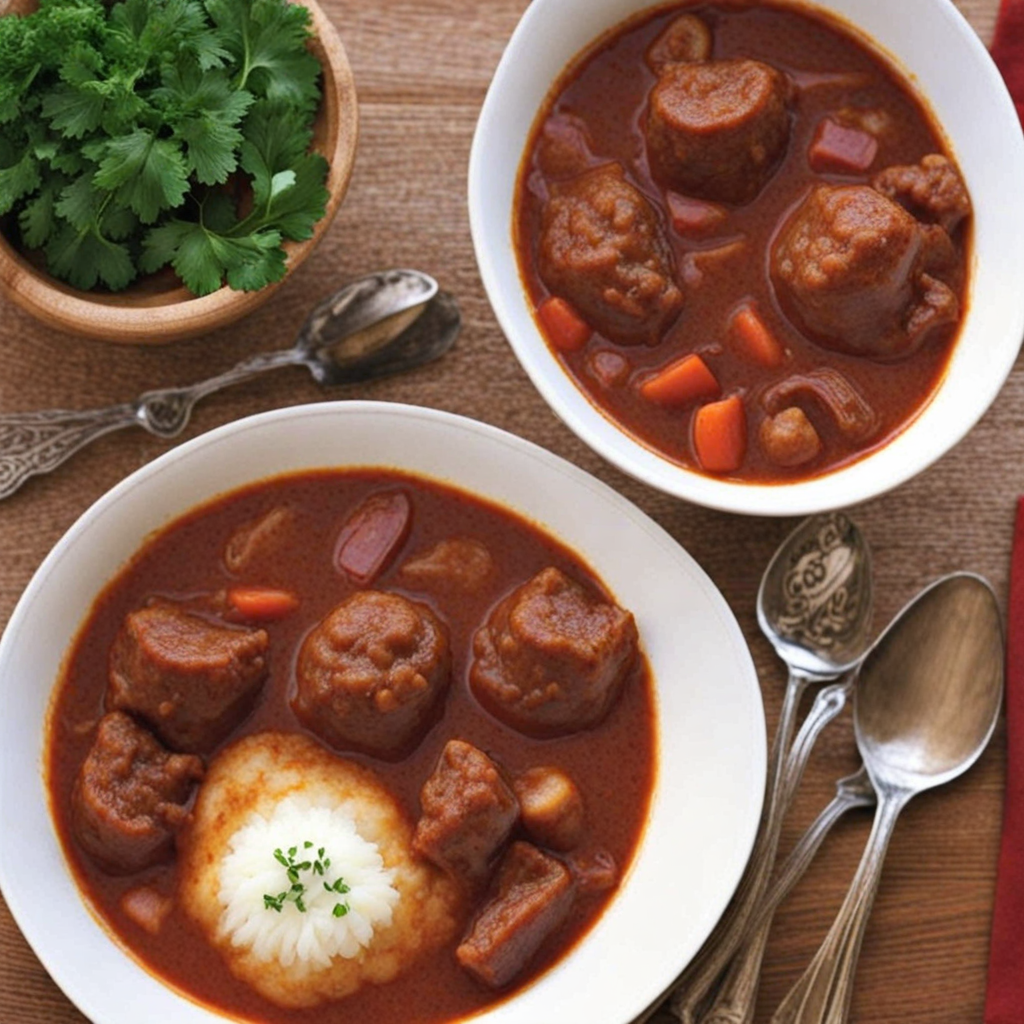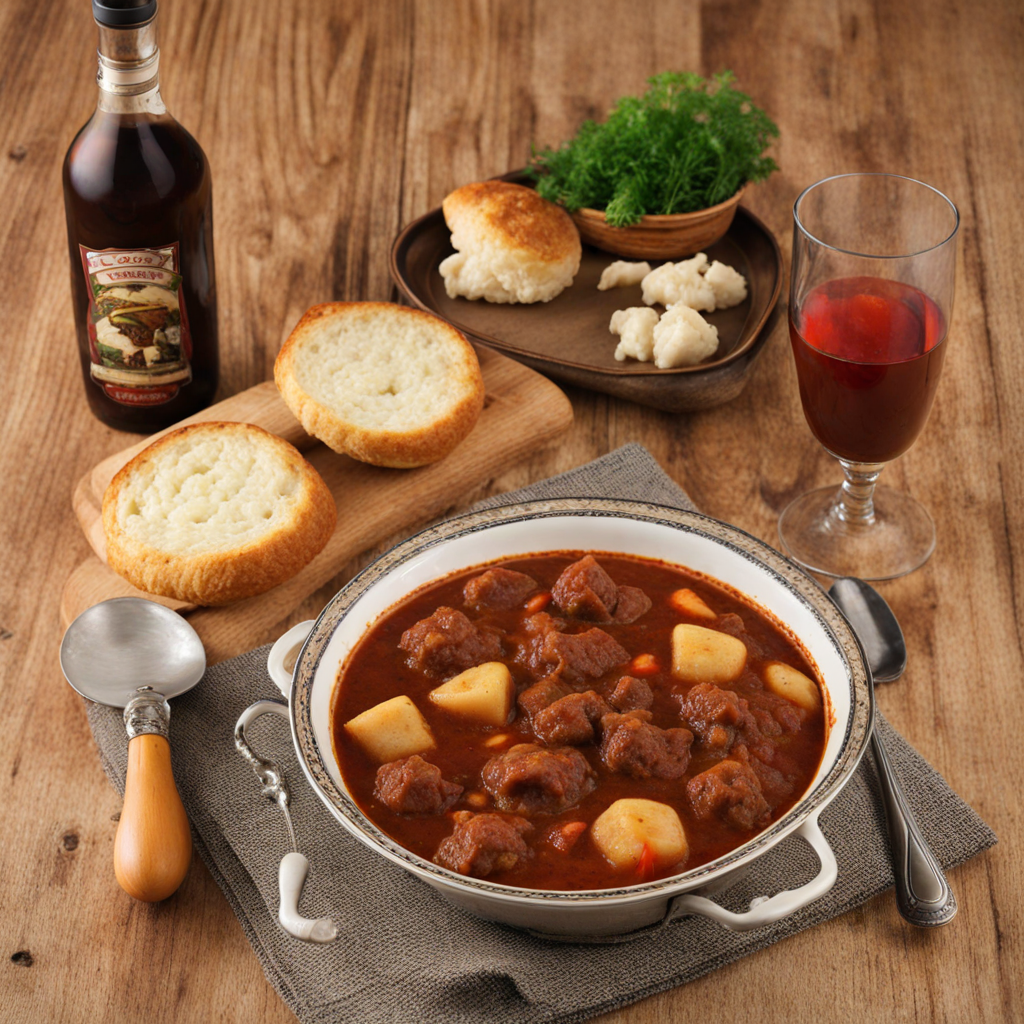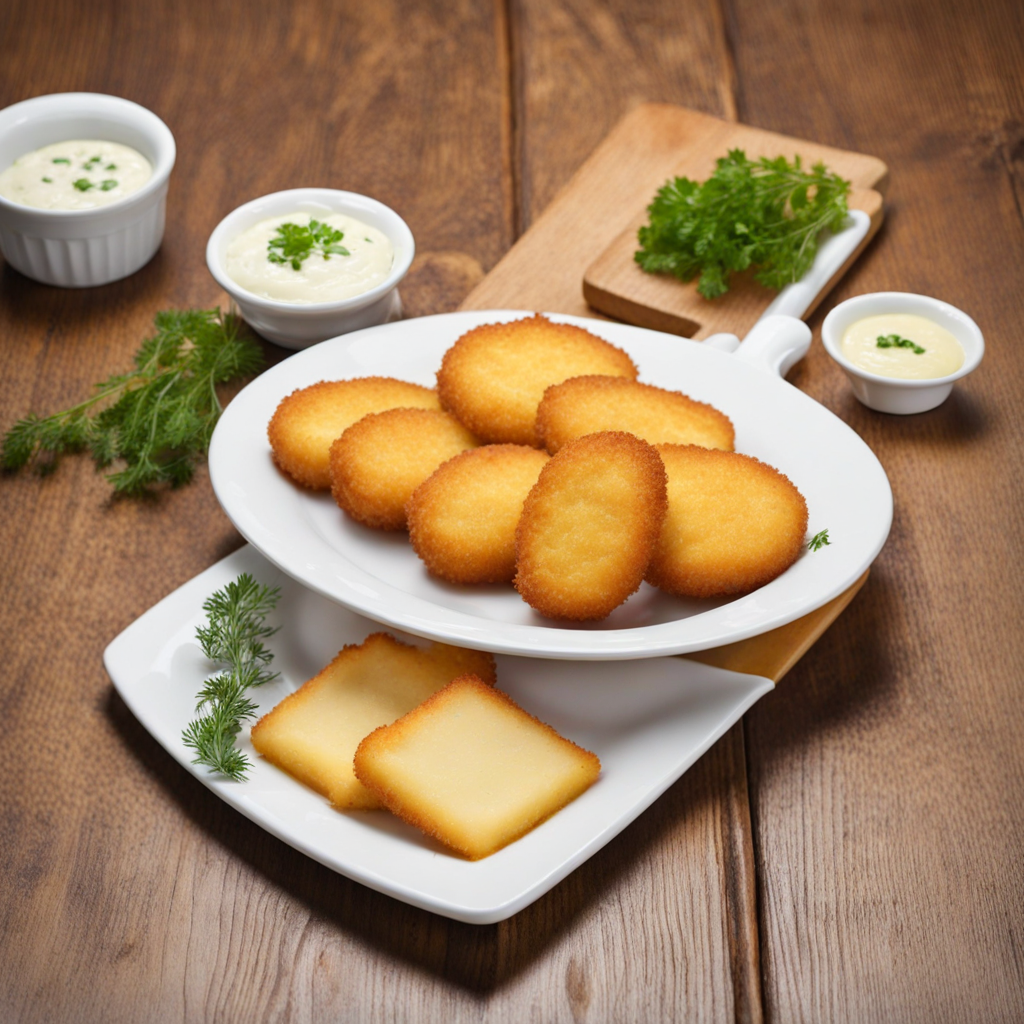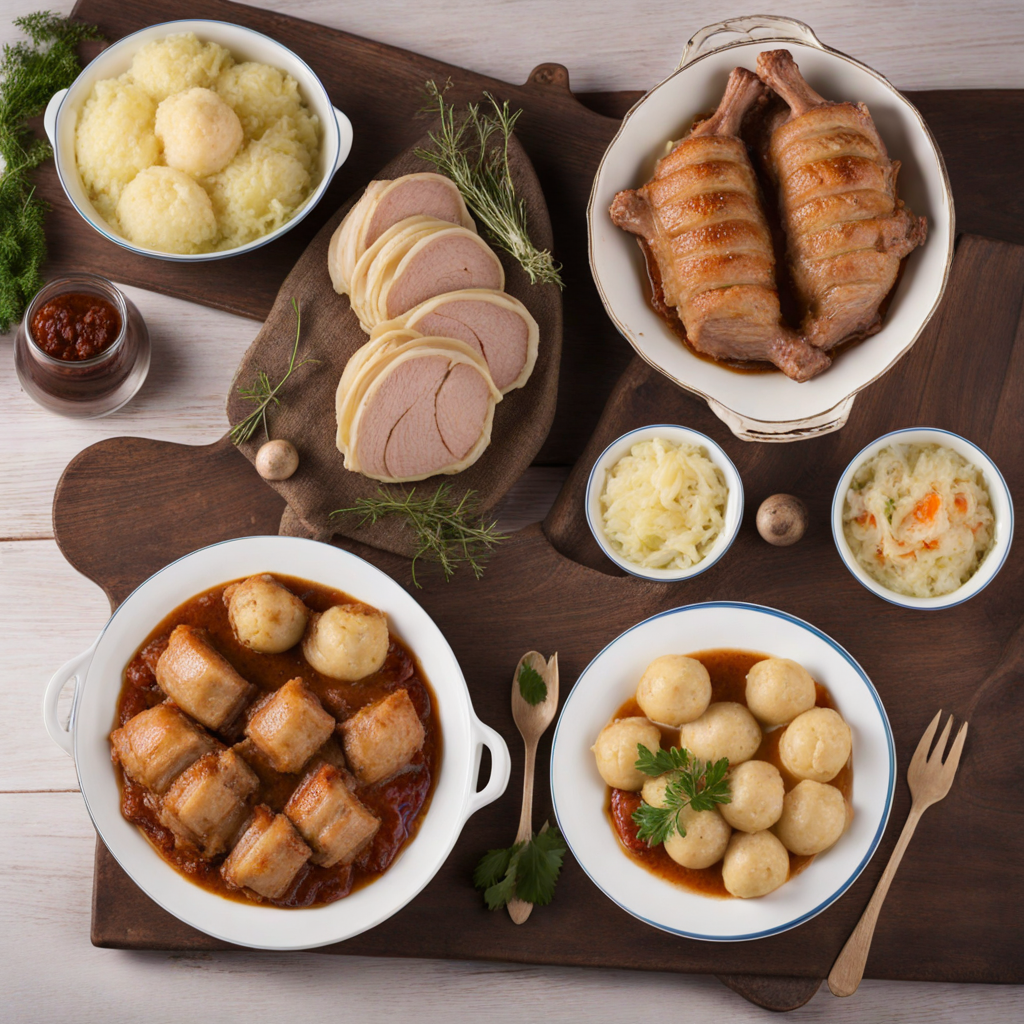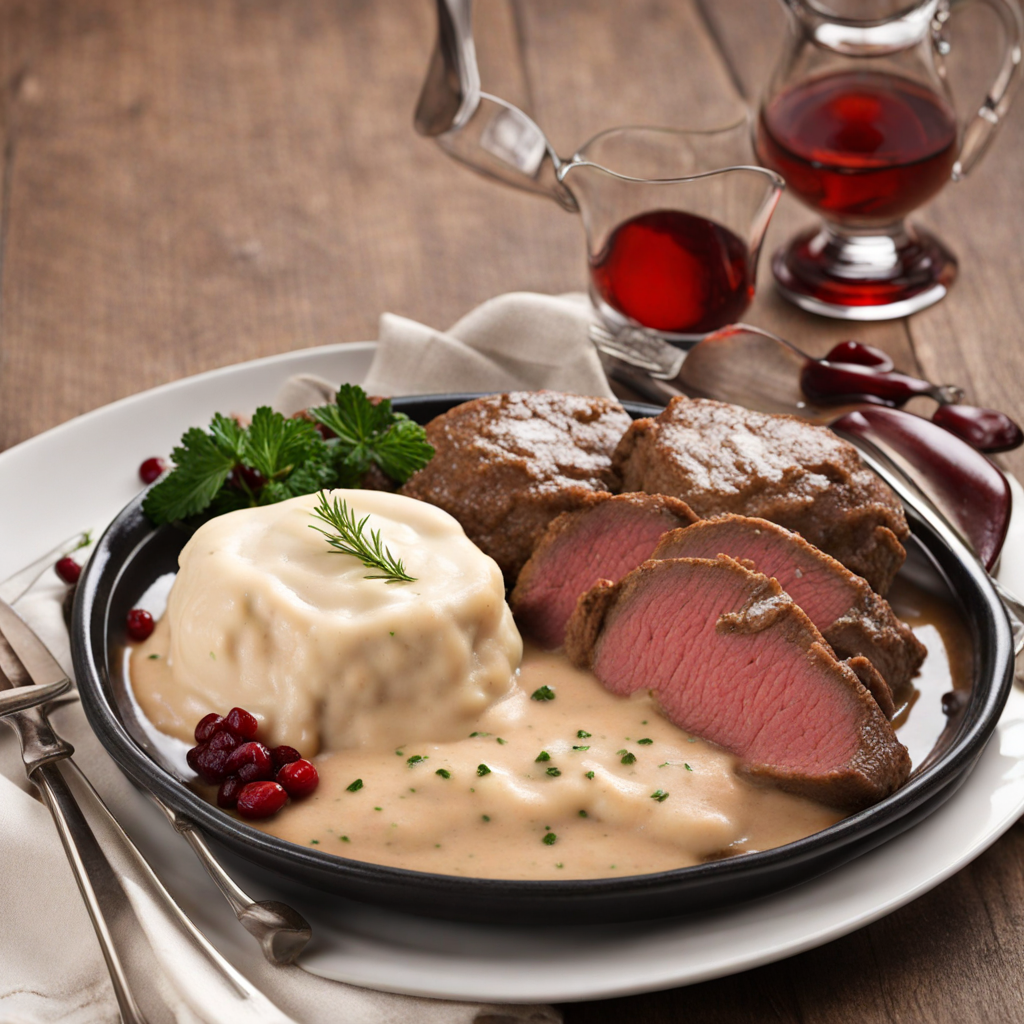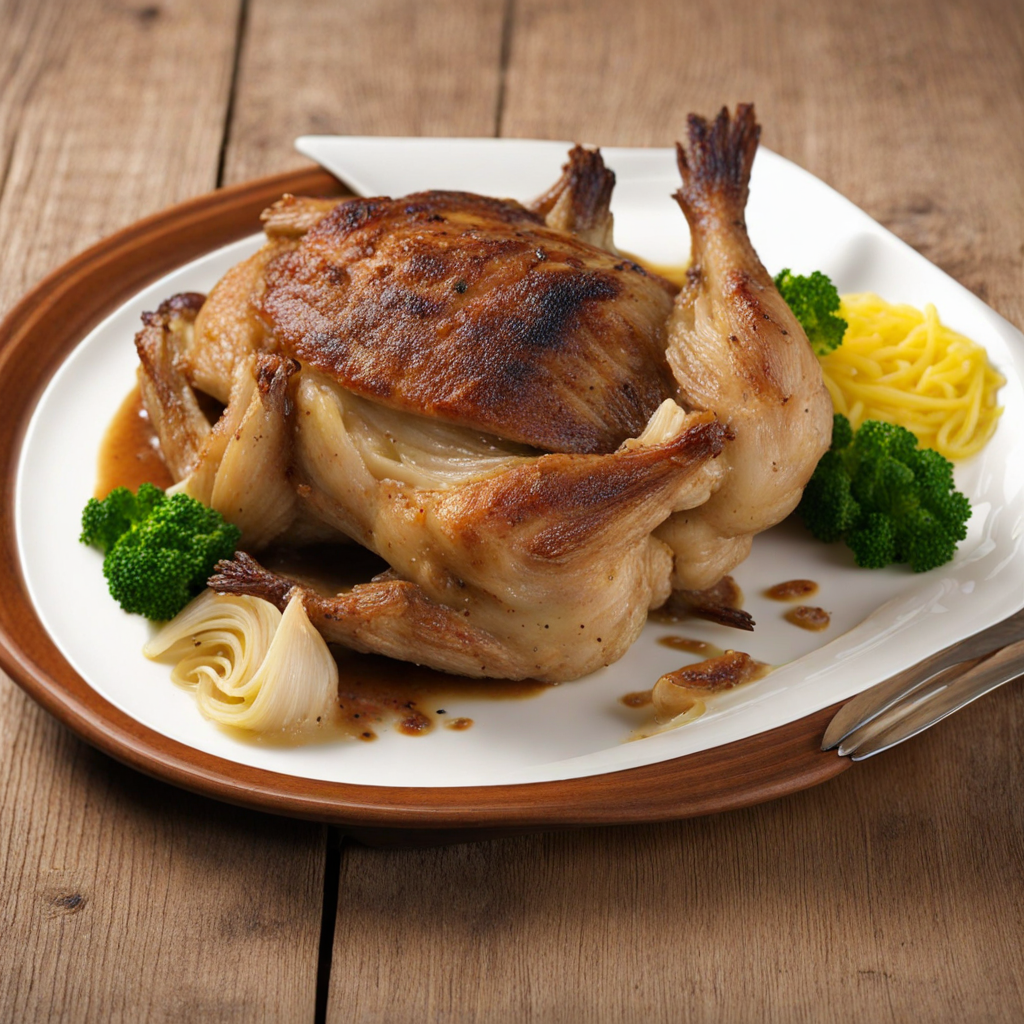Czech Goulash
Czech Goulash is a hearty and flavorful stew that embodies the essence of Czech cuisine. This dish is typically made with tender chunks of beef, slow-cooked in a rich and aromatic sauce that features a base of onions, garlic, and a blend of spices, most notably sweet paprika. The paprika not only gives the goulash its distinctive deep red color but also imparts a warm, slightly smoky flavor that is both comforting and satisfying. The use of caraway seeds and marjoram adds an earthy depth, while the long cooking process ensures the meat becomes melt-in-your-mouth tender, absorbing all the wonderful flavors of the sauce. What sets Czech Goulash apart from other interpretations of goulash is its thick and stew-like consistency, making it perfect for serving over a bed of fluffy dumplings or alongside crusty bread. The dumplings, often made from a simple mixture of flour, yeast, and water, serve as the perfect vehicle for soaking up the rich sauce. They complement the dish beautifully, providing a delightful contrast to the robust meat and spices. Additionally, Czech Goulash can be customized with various ingredients such as bell peppers or potatoes, allowing for a personal touch while maintaining its traditional roots. This dish is not just a meal; it’s a cultural experience that reflects the heartiness of Czech hospitality. Often enjoyed in taverns and family gatherings, Czech Goulash is a warming, communal dish that brings people together. The combination of flavors, textures, and the comforting aroma that wafts from the pot as it simmers creates a sense of coziness that is hard to resist. Whether you're a seasoned food lover or a curious newcomer, tasting Czech Goulash is sure to be a delightful adventure for your palate.
How It Became This Dish
The Rich History of Český Guláš: A Culinary Tradition of the Czech Republic Český guláš, or Czech goulash, is a dish that embodies the heart and soul of Czech cuisine. With its deep, savory flavors and hearty ingredients, it reflects a history that intertwines with the cultural and social fabric of the Czech Republic. The evolution of this dish is a story of resilience, adaptation, and the celebration of local ingredients. #### Origins: A Culinary Crossroads The roots of goulash can be traced back to the 9th century among Hungarian shepherds who cooked a stew of meat and vegetables in a cauldron over an open fire. Known as "gulyás," which translates to "herdsman," this dish was initially a simple, rustic meal designed to provide sustenance for workers in the fields. The goulash gained prominence in Hungary and spread throughout Central Europe, including the Czech lands, in the late medieval period. By the 18th century, goulash had made its way into the Czech culinary repertoire, evolving as it absorbed local ingredients and cooking styles. The Czechs adapted the original Hungarian recipe by incorporating different types of meat, vegetables, and spices that reflected their agricultural practices and tastes. This adaptation marked the beginning of what we now know as Český guláš. #### Ingredients and Preparation Traditional Český guláš is characterized by its use of beef, onions, and a rich paprika-infused sauce. While the Hungarian version typically uses a variety of meats, including pork and veal, Czech goulash tends to favor beef as the primary protein. The dish is often thickened with flour or served with a side of bread dumplings (knedlíky), which are perfect for soaking up the robust sauce. The preparation of Český guláš involves slow-cooking the meat with onions and a generous amount of paprika, allowing the flavors to meld together. Czechs often add caraway seeds, garlic, and sometimes even tomatoes or bell peppers, showcasing regional variations. The dish is typically seasoned with salt and pepper, with some cooks adding a splash of beer or red wine for added depth. This method of preparation not only highlights the importance of slow cooking but also reflects the Czech inclination toward hearty, filling meals that can nourish families during the cold winters. #### Cultural Significance Český guláš is more than just a meal; it is a symbol of Czech identity and community. Throughout history, food has played a central role in Czech culture, serving as a means of gathering families and friends. Goulash is often served at celebrations, festive occasions, and gatherings, reinforcing its status as a comfort food that brings people together. In the Czech Republic, goulash is frequently associated with traditional pubs and taverns, where it is a staple on the menu. The dish has become synonymous with Czech hospitality, with visitors often being treated to a hearty bowl of goulash accompanied by freshly baked bread or dumplings. This communal aspect of sharing a meal echoes the historical significance of goulash as a dish meant to be enjoyed with others. Moreover, goulash has played a role in shaping national pride. In a country rich with culinary traditions, the Czech goulash stands out as a representation of local flavors and regional cooking techniques. It has been embraced during various cultural and national events, underscoring its status as a beloved national dish. #### Development Over Time As the Czech Republic has evolved through various historical and political changes, so too has Český guláš. The dish has adapted to reflect changes in society, culture, and available ingredients. During the Austro-Hungarian Empire, culinary exchanges flourished, and the goulash further diversified in styles and flavors, influenced by neighboring countries. In the 20th century, particularly after World War II, the Czech Republic witnessed a shift in food production and availability due to economic constraints. This period saw the rise of simpler versions of goulash, often made with fewer ingredients, as households adapted to rationing and a changing economy. However, even in these austere times, goulash remained a comforting staple, showcasing the resilience of Czech cuisine. The fall of communism in 1989 brought about a culinary renaissance in the Czech Republic. With increased access to international ingredients and cooking techniques, chefs began experimenting with traditional recipes, including goulash. Modern interpretations emerged, incorporating elements from global cuisines while honoring the dish's roots. Some chefs even began to experiment with vegetarian or vegan versions, broadening its appeal to contemporary diners. Today, Český guláš continues to be a beloved dish, found in both traditional settings and modern restaurants. Festivals celebrating Czech culture often feature goulash as a highlight, showcasing various regional variations and cooking styles. The dish has also found its way into the hearts and kitchens of expatriates, who prepare it as a nostalgic reminder of home. #### Conclusion: A Dish That Unites Český guláš is a testament to the enduring nature of food as a cultural artifact. It tells the story of the Czech people, reflecting their history, struggles, and triumphs. From its humble beginnings as a shepherd's stew to its status as a national symbol, goulash has adapted and evolved, yet it remains firmly rooted in tradition. As a dish that brings people together, Český guláš encapsulates the essence of Czech hospitality and community spirit. It is a meal that nourishes not only the body but also the soul, providing comfort and connection in a rapidly changing world. Whether enjoyed in a bustling pub or a quiet home, Český guláš continues to bind generations together, making it an integral part of the Czech culinary landscape.
You may like
Discover local flavors from Czech Republic


